How to Choose a Residential Air Duct Cleaning Service: A Homeowner’s Guide
Your home’s air ducts might surprise you. The average six-room house accumulates up to 40 pounds of dust, allergens, and other contaminants in its residential air duct cleaning system yearly. Picture this – it’s like having a medium-sized dog made of dust living in your ventilation!
The Environmental Protection Agency (EPA) has found that indoor air pollution levels can be two to five times higher than outdoor levels. Poor indoor air quality can worsen asthma and increase your risk of pneumonia and other upper respiratory problems. Professional duct cleaning, rather than DIY methods, guides you toward healthier air in your home and often helps reduce allergy symptoms.
Most homeowners should schedule air duct cleaning every three to five years, but this timeline changes based on your household situation – especially with pets, smokers, or family members who have allergies or asthma. The service typically costs between $285 and $1,000, making it a valuable investment in your family’s health and your HVAC system’s performance.
Air duct cleaning services provide professional solutions that improve indoor air quality, increase HVAC efficiency, and remove harmful particles to ensure a healthier home environment.
This piece will help you understand everything about selecting the right residential air duct cleaning service. You’ll learn about the cleaning process, how to find trustworthy companies, and ways to avoid common scams. Let’s explore what makes a quality duct cleaning service worth your investment!
Introduction to Air Ducts
Air ducts are the hidden highways of your home’s heating and cooling system, quietly working behind the scenes to deliver comfortable air to every room. Think of your duct system as the lungs of your house—drawing in air, filtering it, and circulating it throughout your living spaces. Over time, these air ducts can collect dust, dirt, mold spores, and other particles that not only clog up the system but also lower your indoor air quality.
When dust and debris build up inside your air ducts, they can restrict airflow, forcing your HVAC system to work harder and reducing its overall efficiency. This can lead to higher energy bills, uneven heating or cooling, and even potential health issues from indoor air pollution. Mold growth inside the ductwork is especially concerning, as it can release spores into the air and trigger allergies or respiratory problems.
The air duct cleaning process is designed to remove these contaminants from your duct system. Professional duct cleaning targets dust, dirt, and other particles that settle inside the ducts, helping to restore clean air and improve the performance of your heating and cooling system. By keeping your air ducts clean, you not only protect your family’s health but also help your HVAC system run more efficiently, saving energy and extending the life of your equipment. Regular cleaning is a simple step toward maintaining a healthier, more comfortable home environment.
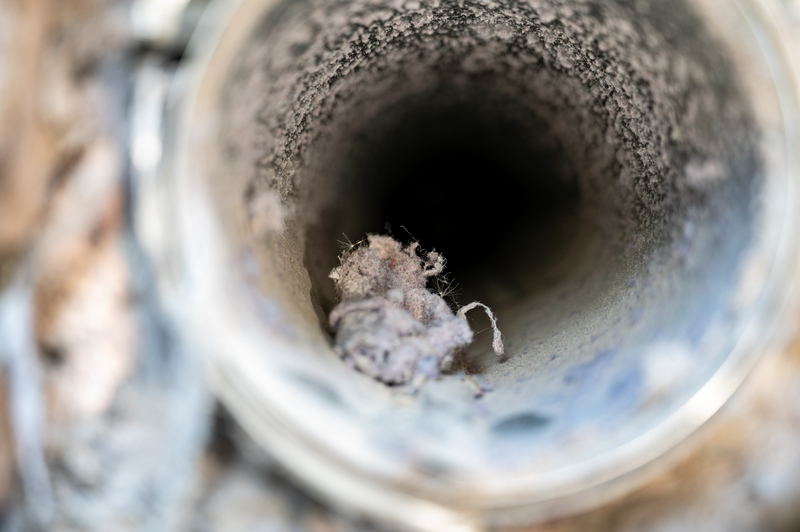
Why Air Duct Cleaning Matters for Your Home
Your home’s duct system works like its lungs, moving air through your house 24/7. These pathways can collect all sorts of contaminants that mess with your health and cost you money.
Maintaining the entire air duct system, including both supply and return ducts, is essential for optimal home air quality and efficient system performance.
Let’s get into why keeping your air ducts clean should top every homeowner’s priority list.
Health benefits of clean air ducts
Clean air ducts improve your indoor air quality by a lot, which directly affects your family’s health. Regular cleaning reduces allergens in your home. Your HVAC system pumps cleaner air instead of dirty air, which means fewer allergens that cause breathing problems.
This reduction helps ease symptoms if you have allergies or asthma. Clean ducts also lower your risk of breathing harmful particles that float around your living spaces.
Regularly changing or maintaining filters in your HVAC system is essential for reducing allergens and improving indoor air quality.
Research shows bioaerosol levels drop by a lot after cleaning, which proves professional cleaning cuts down breathable particles over time. Many homeowners sleep better and feel healthier after getting their air ducts cleaned.
Effect on HVAC efficiency and energy bills
The best reason to clean your air ducts regularly comes from efficiency studies. Research shows cleaning cut fan and blower energy use by 41% to 60%. Supply airflow jumped 10% to 46% after cleaning.
Dust and debris in your ductwork block airflow and make your system work harder. This drops system efficiency and drives up energy use. The U.S. Office of Energy Efficiency and Energy notes you can cut heating and cooling energy use by 20% to 50% with proper maintenance and other steps.
Regular duct cleaning can help save energy by improving airflow and reducing the workload on your HVAC system.
Dirty ducts don’t just raise your monthly bills – they shorten your system’s life too. Pushing air through clogged ducts strains vital components, which can make your system fail early. Clean ducts help your HVAC system last longer.
Common indoor air pollutants found in ducts
Your home’s air ducts can trap many contaminants that hurt indoor air quality:
- Dust and dirt: Dead skin cells, textile fibers, and other debris build up over time
- Mold and mildew: These grow in damp spots and release spores into your home’s air, causing allergic reactions and breathing issues
- Pet dander: Tiny skin flakes from pets trigger allergies when your HVAC system spreads them around
- Pollen and outdoor allergens: These sneak in through windows and doors, settle in ducts, then recirculate
- Volatile Organic Compounds (VOCs): These chemicals come from household items like paints, cleaning products, and furniture
Excessive amounts of dust, debris, or mold in your ducts are a clear sign that professional cleaning is needed to prevent indoor air quality issues.
The EPA says small amounts of dust in ducts might not pose big health risks, but moisture shouldn’t be there because it lets biological contaminants grow. Controlling moisture matters since mold and bacteria in ducts can cause allergic reactions when spread through your home.
Professional air duct cleaning stops these contaminants and keeps your indoor air healthier while making your HVAC system run better at the same time.
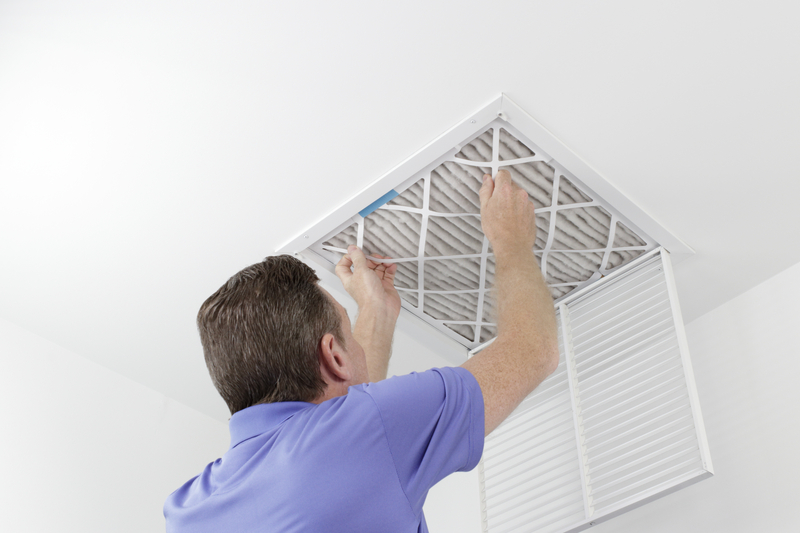
Signs You Need Residential Air Duct Cleaning
Your air ducts might need professional cleaning to prevent health issues and keep your HVAC system running efficiently. Most homeowners don’t notice the warning signs until things get bad. Here are some clear signs that tell you it’s time to call the experts. A professional inspection can help determine whether your air ducts need cleaning by assessing contamination levels.
Visible mold or mildew near vents
Black, green, or brown spots with a fuzzy or slimy texture near your air registers are a serious red flag you shouldn’t ignore. These spots often show up as streaks or patches that won’t wipe away easily, which points to a mold problem in your ductwork.
If you notice substantial visible mold growth inside your ducts, this is a strong indicator that immediate professional cleaning is required to prevent health risks.
Your air ducts create the perfect breeding ground for mold and mildew when moisture builds up inside them. Your HVAC system can spread these spores all through your home every time it runs. This can lead to:
- Respiratory infections and throat irritation
- Chronic sinus problems and infections
- Skin rashes and other reactions
Take a look at both the visible vent covers and inside the ducts if you can. Note that you should always let professionals handle duct cleaning when you think there’s mold.
Unusual odors or dust buildup
A musty smell that gets stronger when you run your heating or cooling system is a clear sign of contaminated ductwork. You’ll notice this earthy or damp odor when your HVAC system burns mold, mildew, or too much dust.
Ducts can become blocked by dust and debris, which restricts airflow and can lead to unpleasant odors and reduced system efficiency.
Watch out for these smells too:
- Stale, ammonia-like scents that might mean you have rodents
- Pungent, oily smells that could be cockroaches
- Burning odors from dust buildup or mechanical issues
Your air ducts might be spreading contaminants if you dust often but surfaces get dirty again quickly. Dust that builds up fast on furniture despite regular cleaning suggests your ductwork is the culprit. You can confirm this by checking inside a vent cover – look for matted dust or fuzzy coatings.
Recent renovations or pest issues
Home renovations create tons of dust and debris that end up in your ductwork. Activities like drywall work, sanding, and demolition fill your HVAC system with fine particles. This renovation dust can contain toxic materials that shouldn’t be in your breathing air.
After renovations or pest infestations, it’s important to clean the entire vent system to remove dust, debris, and contaminants that can affect air quality and system performance.
Your ducts need immediate inspection if you spot signs of pests. Rodents and insects use air ducts like highways through your home, leaving behind:
- Droppings that look like black rice grains or coffee grounds
- Nesting materials and chewed duct parts
- Scratching or scampering sounds at night
You’ll need to clean your ducts after dealing with a pest problem. Dead pests can cause bad smells and create health risks.
Increased allergy or asthma symptoms
Your body often gives you the clearest warning signs. Dirty air ducts might be the reason if your family’s allergy symptoms get worse indoors. Your HVAC system can spread dust, pet dander, pollen, and mold spores, causing:
- Sneezing, coughing, and stuffy noses
- Itchy, red, or watery eyes
- Sore throats or irritated sinuses
- Worse asthma symptoms or breathing problems
These symptoms mean something’s wrong if they get better when you leave home but come back when you return. This pattern shows you might have an indoor air quality issue from dirty ductwork.
You should consider professional duct cleaning if you notice any of these signs. Finding multiple symptoms means you need qualified specialists to check your ductwork right away.
Understanding the Air Duct Cleaning Process
Professional air duct cleaning goes way beyond hoovering up visible vents. A good understanding of this complete process helps homeowners choose the right service provider.
Cleaning air ducts thoroughly after events like fires or water damage is crucial to remove soot, smoke, and contaminants, ensuring improved indoor air quality and restoring HVAC efficiency.
What areas of the HVAC system are cleaned
A full picture of residential air duct cleaning covers the whole HVAC system, not just the parts you can see. The National Air Duct Cleaners Association (NADCA) states that proper cleaning should include:
- Air ducts (supply and return)
- Coils and heat exchangers
- Drain pans
- Registers, grilles, and diffusers
- Air plenum
- Blower motor and assembly
- Air filter and air cleaner
- Air handler
- Air handling units
Cleaning other components such as heat exchangers, drain pans, cooling coils, and fans is also important to ensure system efficiency and maintain indoor air quality.
Quality companies clean both supply and return sides of your system. This all-encompassing approach will give a system that works efficiently and stops contaminants from spreading through your home.
Tools and techniques professionals use
Source removal is the quickest way to clean ducts—this process puts the entire system under constant negative pressure with a specialized vacuum. This method keeps contaminants from escaping into your living space.
Professional technicians rely on specialized equipment such as:
- High-powered vacuum collection devices (truck-mounted or portable)
- Rotating brushes and air whips
- Compressed air nozzles
- HEPA-filtered equipment (mandatory for indoor exhaust)
The technicians seal all registers with adhesive covers to keep proper suction. They connect the vacuum to create negative pressure. They use brushes, air whips, and compressed air to break loose debris while the vacuum collects it.
How long does duct cleaning take?
Quality residential air duct cleaning usually takes 2-5 hours based on several factors. Small homes (under 3,000 square feet) need about 3 hours, while larger homes might require 5 hours to get a complete cleaning.
Watch out for companies that say they’ll clean your entire system in under an hour—this shows poor service. NADCA confirms that proper cleaning needs 3-5 hours. Companies that finish faster probably aren’t cleaning every component properly.
What to expect during the appointment
The technicians start with a visual inspection of your ductwork to check contamination levels and spot problems like leaks. They then remove and clean all vents and registers.
During the cleaning process:
- You’ll hear vacuum noise and light banging as technicians work with mechanical brushes
- The technician uses drop cloths and plastic guards to keep dust contained
- Coverings are used to protect carpets and walls from dust and debris during the cleaning process
- They uncover and clean each register one at a time while keeping negative pressure
The professionals should clean the blower motor, evaporator coil, and drain pan before finishing. Many technicians walk you through the results of their work after completion.
The technician ended up leaving your home as clean as—or cleaner than—they found it, without any mess from the cleaning process.
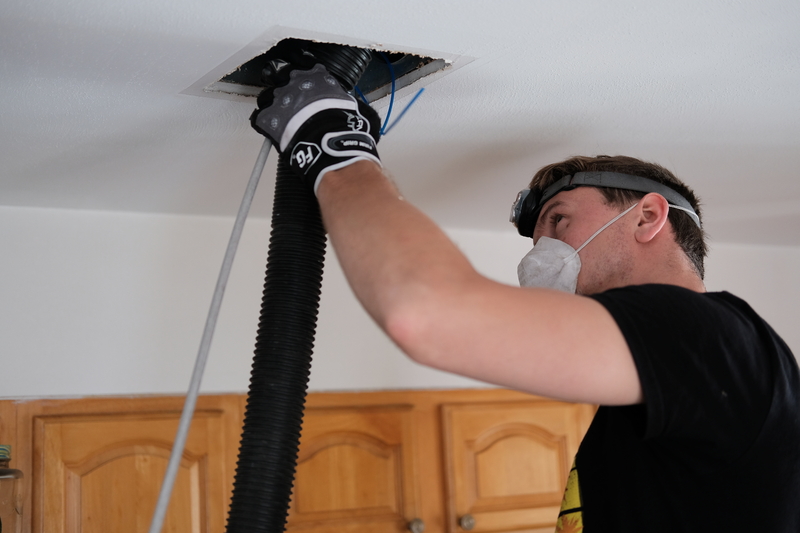
How to Choose a Reputable Air Duct Cleaning Company
Finding a good residential air duct cleaning company can be tricky because there are so many choices out there. You need to do your homework and know what makes a company trustworthy.
Reputable air duct cleaning companies often have experience and leadership in the broader restoration industry, which can be a sign of their reliability and expertise.
Check for NADCA certification
The first thing you should look for is certification from the National Air Duct Cleaners Association (NADCA). This certification shows that technicians follow the best practices and stick to a strict code of ethics. NADCA members must have at least one certified Air System Cleaning Specialist (ASCS) on their team. These specialists pass complete exams that show they know HVAC design and cleaning methods inside and out. They also take regular training to keep their skills sharp and stay up to date with industry standards.
Ask about cleaning methods and equipment
Good companies will take time to walk you through their cleaning process. Make sure to ask:
- What type of equipment they use (they should have professional-grade HEPA-filtered vacuums, not shop vacs)
- If they put the whole system under negative pressure (this is crucial for good cleaning)
- Whether they clean everything (furnace, air conditioner, supply and return ducts)
- How much time they need (a proper job takes 3-5 hours at least)
The type of duct material—such as flex duct, duct board, metal ducts, or sheet metal—affects the cleaning approach. Professionals should be able to explain how they handle cleaning and treating each type, since flex duct may sometimes be more economical to replace, duct board and sheet metal have different susceptibilities to mold and contamination, and metal ducts are generally easier to clean and inspect.
Watch out for technicians who can’t explain what they do or only use simple tools – that’s usually a red flag.
Read reviews and ask for references
Take time to research companies by looking at:
- Google reviews and Better Business Bureau ratings
- Customer feedback on different websites
- Their actual business address (not just a P.O. box)
- References from past customers (and call them yourself)
Look at reviews on several sites to make sure the quality ratings match up.
Common Mistakes to Avoid When Choosing a Duct Cleaning Service
Choosing the right duct cleaning service is crucial for protecting your home’s air quality and the efficiency of your heating and cooling system. However, many homeowners fall into common traps that can lead to poor results or even damage to their duct system.
One major mistake is hiring a company that uses the wrong equipment or outdated cleaning methods. Without proper vacuuming equipment and techniques, a service might stir up dust and contaminants, spreading them throughout your home instead of removing them. Always make sure the company uses professional-grade tools designed specifically for air duct cleaning.
Another pitfall is skipping the research phase. Failing to check a company’s reputation, reviews, and certifications—such as those from the National Air Duct Cleaners Association (NADCA)—can leave you vulnerable to subpar service or even scams. Certified professionals follow industry standards and are more likely to deliver a thorough, safe cleaning.
Be cautious of companies that make exaggerated claims about the health benefits of duct cleaning or pressure you with aggressive sales tactics. Reliable services will provide clear, evidence-based information and won’t rush you into a decision.
It’s also important to avoid companies that skip a detailed visual inspection of your duct system before starting the job. A proper inspection helps identify problem areas, such as mold, water damage, or excessive debris, ensuring the cleaning process addresses all contaminants effectively.
To sum up, here’s how to avoid the most common mistakes:
- Choose a company with the right vacuuming equipment and cleaning methods
- Verify certifications and check customer reviews
- Insist on a thorough visual inspection before cleaning begins
- Avoid high-pressure sales tactics and unsubstantiated health claims
By steering clear of these mistakes, you’ll ensure your air ducts are cleaned safely and effectively, leading to better indoor air quality, improved system efficiency, and protection against water damage and other costly issues. Regular, professional duct cleaning is a smart investment in your home’s comfort and health.
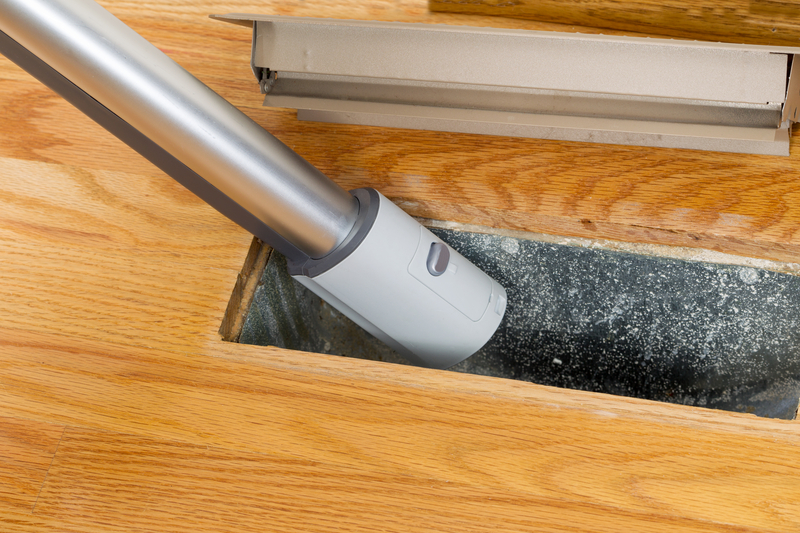
Cost and Value of Residential Air Duct Cleaning
Air duct cleaning is a big investment that affects both your immediate budget and future home maintenance. You need to understand the costs and benefits to make the right choice for your home.
Typical residential air duct cleaning cost
The Environmental Protection Agency says professional air duct cleaning costs $450 to $1000 for an average-sized home’s complete system. The National Air Duct Cleaners Association (NADCA) confirms these prices reflect a thorough cleaning of the entire HVAC system.
Standard residential service costs $300 to $500 for most homes. Prices vary based on your home’s specific needs. Companies charge $0.15 to $0.40 per square foot, while some price by vent at $25 to $50 per supply vent.
Watch out for “whole house specials” under $100—these are usually bait-and-switch scams. No legitimate company can properly clean an entire system at such low rates.
Factors that affect pricing
Your final air duct cleaning cost depends on several factors:
- Home size and layout: Bigger homes with more ductwork cost more. A 3,000+ square foot home costs much more than a 1,200 square foot property.
- System complexity: Houses with multiple HVAC units or zones cost twice as much as single-system homes.
- Accessibility challenges: Hidden ductwork or hard-to-reach areas need extra work and special equipment.
- Contamination level: Systems with years of buildup, mold, or pest problems need deeper cleaning and special treatment.
- Insulation condition: Wet or moldy insulation inside ductwork can increase cleaning complexity and cost, as it may require removal or replacement to prevent moisture intrusion and mold growth.
- Additional services: Complete packages might include dryer vent cleaning, antimicrobial treatments, or HVAC checks.
Why professional cleaning is worth it
Clean ducts help your HVAC system run better and use less energy to heat or cool your home. This means lower utility bills every month.
NADCA members’ research showed amazing results after professional cleaning:
- Cooling temperature drop improved by 61%
- Airflow volume went up by 11%
- Cooling capacity increased by 150%
Clean ducts also prevent expensive HVAC repairs. Dust buildup puts stress on your system and can lead to costly part replacements. Regular cleaning helps your system last longer and work better.
Professional duct cleaning pays off through better system performance, energy savings, and cleaner indoor air. This protects your family’s health and your home investment.
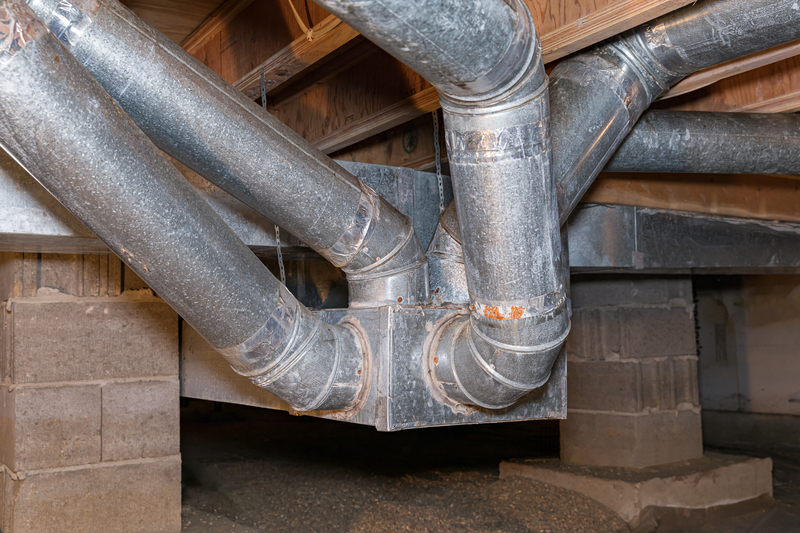
Conclusion
Clean air ducts play a vital role in your family’s health and your home’s energy efficiency. This piece explored why professional air duct cleaning matters, how to spot when you need it, what happens during the process, and how to pick a trusted service provider.
Professional duct cleaning is way better than DIY approaches to remove contaminants from your HVAC system. Evidence shows that proper cleaning can cut fan energy use by up to 60% and improve airflow substantially. Families also report fewer allergy symptoms and better sleep after professional cleaning services.
Additionally, research suggests that air duct cleaning can improve system efficiency and indoor air quality, though the evidence is not always conclusive and highlights the importance of proper maintenance and addressing underlying causes.
Note that quality duct cleaning is an investment, not an expense. Prices range from $300-$1000 based on your home’s size and system complexity. The benefits go way beyond clean ducts – your HVAC system runs better, which can lower energy bills and make your equipment last longer.
NADCA certification should be your main measure when picking a service provider. You should avoid too-cheap offers and companies that won’t explain their methods. Good professionals will explain their process and share references from happy customers.
Most homes need professional air duct cleaning every three to five years to keep indoor air quality high. Homes with pets, smokers, or allergy sufferers might need more frequent cleaning. Clean air isn’t a luxury – it’s basic to your family’s health and comfort.
Start researching certified professionals in your area today. Your lungs and wallet will thank you for years to come!
FAQs
Q1. How often should I have my air ducts cleaned? For most homes, professional air duct cleaning is recommended every three to five years. However, households with pets, smokers, or residents with allergies may benefit from more frequent cleaning.
Q2. What are the signs that my air ducts need cleaning? Key indicators include visible mold or mildew near vents, unusual odors when your HVAC system runs, excessive dust buildup despite regular cleaning, and increased allergy or asthma symptoms among household members. Controlling moisture is the most effective way to prevent mold and biological growth in air ducts.
Q3. How much does professional air duct cleaning typically cost? The average cost for residential air duct cleaning ranges from $300 to $500, though prices can vary based on factors such as home size, system complexity, and level of contamination.
Q4. What should I look for when choosing an air duct cleaning company? Look for companies with NADCA certification, as this ensures they follow industry best practices. Ask about their cleaning methods and equipment, read customer reviews, and be wary of unusually low-priced offers, which often indicate subpar service.
Q5. What are the benefits of professional air duct cleaning? Professional cleaning can improve HVAC efficiency, potentially lowering energy bills and extending equipment lifespan. It can also enhance indoor air quality, which may lead to reduced allergy symptoms and better overall health for household members.

